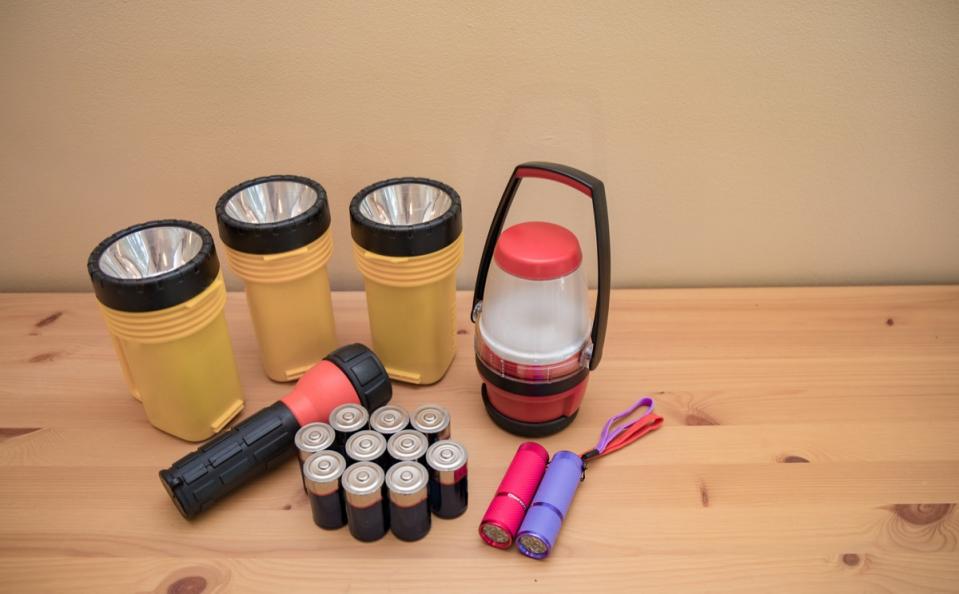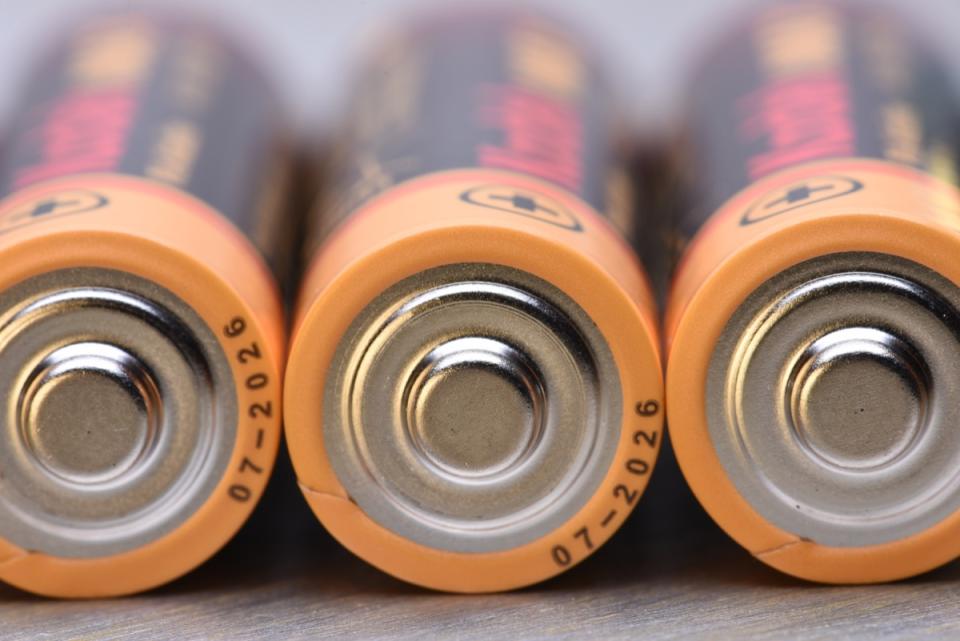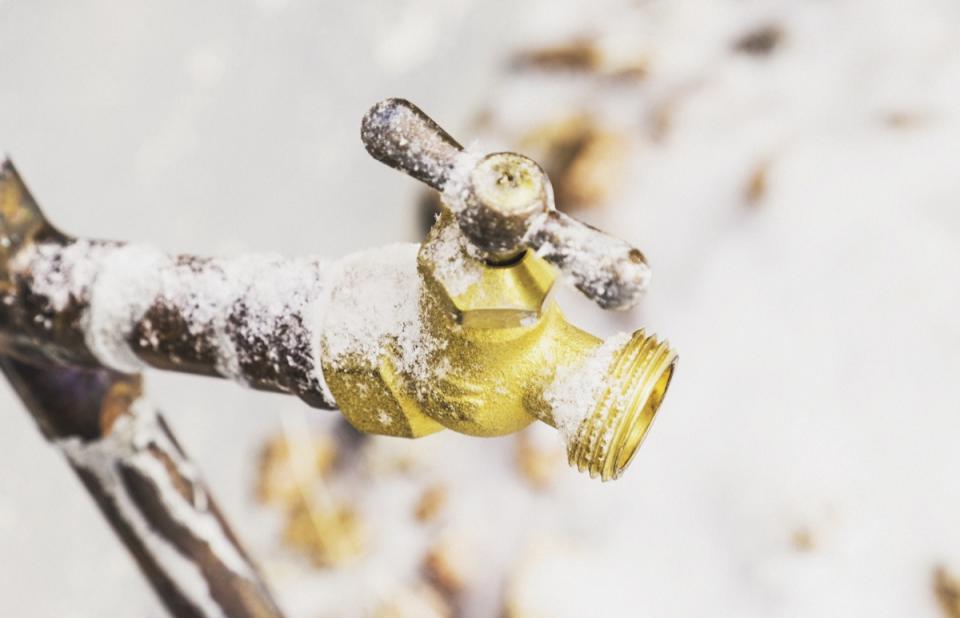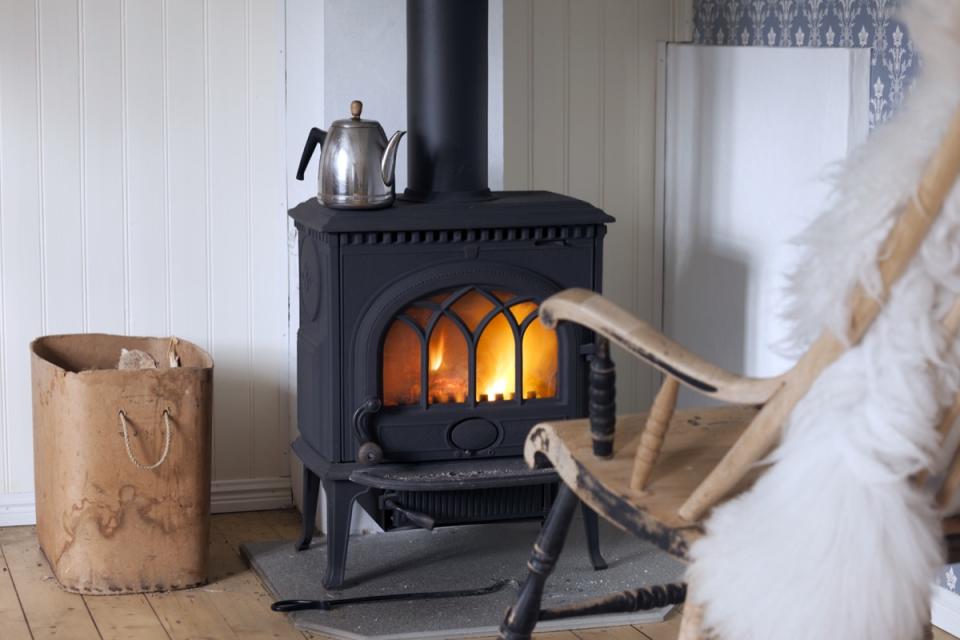If you live in a location where winter temps dip below freezing, power outages will be among the many seasonal scourges that upend daily life. Reasons can include fallen trees and branches after winter storms, ice on power lines, car accidents that involve equipment, wind damage, and more. A sudden loss of electricity can be an unpleasant interruption, or it can last for days or longer. In the worst cases, it can be a life-threatening hazard. To prepare yourself for all the possible scenarios, read on to hear from home and maintenance experts about what to keep on hand and how to protect your home to minimize the impact when the power goes kaput.
READ THIS NEXT: 10 Mistakes You're Making That Keep Your House Cold, Experts Say.
1
Be ready to keep perishables cold.

One of the first concerns when taking stock of electric-powered necessities is that perishable food in the refrigerator and freezer won't be kept cold.
"Your goal is to preserve food for up to four hours inside the fridge and 48 hours in the freezer," according to Robert Johnson, marketing director at Coast Appliances.
After that, one option is to put these items outside, but this could prove dangerous if it's dark or icy. Christoper Haas, licensed master electrician and owner of Haas and Sons Electric, says that's why it's smart to invest in a quality-brand cooler like a Pelican, Yeti, or RTIC.
"Keep a 20-pound bag of ice in the freezer and if the power goes out and you're worried about any perishables or medication losing their refrigeration, you can pack them in here," explains Haas. "Ideally, you just leave your fridge and freezer doors closed so they can remain chilled for as long as possible, but when hours become days, you need another plan."
2
Have a way to light the stove.

In terms of preparing food, Ryan Meagher of residential construction company BVM Contracting reminds us that if you have a gas stove, you can use it for cooking, "but make sure that you have matches—or a barbecue lighter—in case you need them to start the flame."
A propane camping stove can be used to cook food and boil water when there's no other source (just be sure to follow all safety instructions). And, of course, it's always a good idea to stock up on a variety of non-perishables in anticipation of a power outage.
READ THIS NEXT: 10 Mistakes You're Making That Wreak Havoc on Your House in Winter, Experts Say.
3
Be sure your backup lighting is ready to go.

Especially after dark, a substitute light source is often the first thing we seek to be able to assess and address the situation. Remember to keep battery-operated flashlights and candles on hand, and use them instead of your phone when possible to preserve the phone's battery charge.
Haas recommends having an LED pop-up camping lantern on hand. "You can usually get sets for under $20 or $30, and they're lightweight, which is good because they do a wonderful job of casting light throughout a room. If you have a ceiling hook for a plant or decoration, these can hang from that and actually produce quite a lot of light."
4
Stock up on batteries.

Most of us might think we're prepared in the battery department, but oftentimes what we have in our junk drawers is old or mismatched. In anticipation of a power outage, make sure you have enough batteries for the devices that will need them but store them separately. They can degrade and leak over time, damaging the items they're meant to power. Install them only when neccesary.
Portable charging stations or power banks that are charged and ready to go can be a lifeline for phones and small devices, and a dedicated battery backup station can keep your wifi up and running.
A potentially lifesaving tip is to "install backup batteries in your smoke and carbon monoxide detectors," according to Barry Gray, archeologist, woodworker, and founder of The Tools Square. "This will ensure that you'll be alerted to any potential dangers even if the power is out. Use a cordless drill to easily install the batteries."
For more home advice delivered straight to your inbox, sign up for our daily newsletter.
5
Save your pipes.

"If the power is out for an extended period of time and the temperature drops below freezing, your pipes could freeze and burst," notes Matt Hagens, carpenter and founder of Obsessed Woodworking. "To prevent this from happening, make sure your pipes are properly insulated. You can use pipe sleeves or wrap your pipes in insulation tape to keep them warm."
"If you find yourself in a position where you do not have a backup power source (or a heating source that does not rely on electricity), your best course of action is to drain the entirety of the pipes in your home to prevent the water inside them from freezing," adds Meagher. "Note that it will take a while for the pipes to freeze with water inside so you will have time to do this as the power is out."
Another plumbing detail you may not have considered: The sump pump that keeps excess water out of your basement. "Be sure to test your sump pump by pouring a few gallons of water into the sump pit to make sure that the pump turns on," advises Sara Lambert, senior director of category management at Batteries Plus. "A regular sump pump won't work if the power goes out, but you can install a battery-powered backup sump pump to protect your home. If you do have a backup sump pump, be sure to test that the battery is still good prior to a winter storm."
6
Know how to keep warm.

Staying warm at home may be the top priority. "Wear layers of warm clothing and use blankets and sleeping bags to keep warm," says Hagens. "You can also use a fireplace or wood stove (if you have one) to stay warm, but be sure to follow safety guidelines." If you have a backup generator, space heaters are also great, but again, be sure to follow all safety instructions.
READ THIS NEXT: 7 Secrets for Buying a House Right Now, According to Real Estate Experts.
7
Get a backup generator.

Having a backup generator isn't as simple as ordering one online. There are three main types of generators—portable generators, home standby generators, and power stations—and you'll need to know which one is best for your home.
"Portable generators are smaller units that run on gas or propane and provide enough power to run a few basic essentials," explains Lambert. According to Meagher, these can usually be purchased for under $1,500, however, "if you're going to run a portable unit you'll also want to get a manual transfer switch that will be above $1,000 to install."
"Home standby generators are connected to your home's electrical system and run on your home fuel supply (either propane or natural gas)," says Lambert. "These types of generators kick in automatically during a power outage and will power a much larger number of applications." These typically cost between $5,000 and $15,000.
For both of these options, you'll need to have enough fuel on hand, stored safely, to power the generator. Make sure to get the unit regularly checked and serviced according to the manufacturer's recommendations. And be sure to follow all safety precautions: For example, never attempt to run a gas generator indoors and test your carbon monoxide detector prior to using a generator.
"If you're concerned about carbon monoxide emissions, consider purchasing a battery or solar-powered generator, as these do not release carbon monoxide," recommends Lambert. These are considered power stations.
8
Stay connected and informed.

Without being able to power on the TV to watch the news, you'll want to keep phones and other small electronic devices powered up with battery-operated portable charging stations or power banks, as well as a battery backup station to power your home's wifi.
Gray reminds us that the classic field radio also shines at times like these. "A long-range two-way radio can be used to communicate with your neighbors and stay updated on any local emergencies, while a satellite phone can help you stay connected even in remote areas."
Article From & Read More ( 8 Tips to Prepare for a Winter Power Outage, According to Experts - Yahoo Life )https://ift.tt/Jzwp5i1
Tidak ada komentar:
Posting Komentar